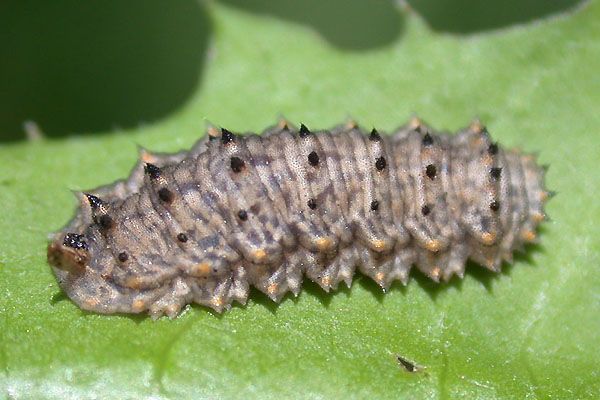Posted by Gerard Pennards on 01-11-2004 15:23
#2
To be really short: YES, it is!:D
Typical are the 2 spines at the end of the body, on this photo visible on the left!
Greetings
Edited by Gerard Pennards on 01-11-2004 15:24
Posted by Gerard Pennards on 01-11-2004 20:42
#4
No, I don't think you are so far off, it depends a little bit on the size of the larva.
If it is a quite big larva, it could be something like a Leucozona larva, if it is small, it could be Paragus as well, although I think the setae on the body of a Paragus are relatively bigger!.
Characteristics are not clearly visible on this picture, especially on the back side of the larva.
For Leucozona, at the back side of the larva should be 2 pairs of setae on short papillae, for Paragus there should be a row of 4 setae at the tip of the anal segment!
Greetings,
Posted by gordo on 02-11-2004 13:06
#5
Thanks for your answers, the size was about 15mm
Posted by Menno Reemer on 02-11-2004 13:28
#6
I don't think it's a Leucozona, because then the lateral margins should not be as serrate as they are in this specimen. Didea seems more probable to me.

